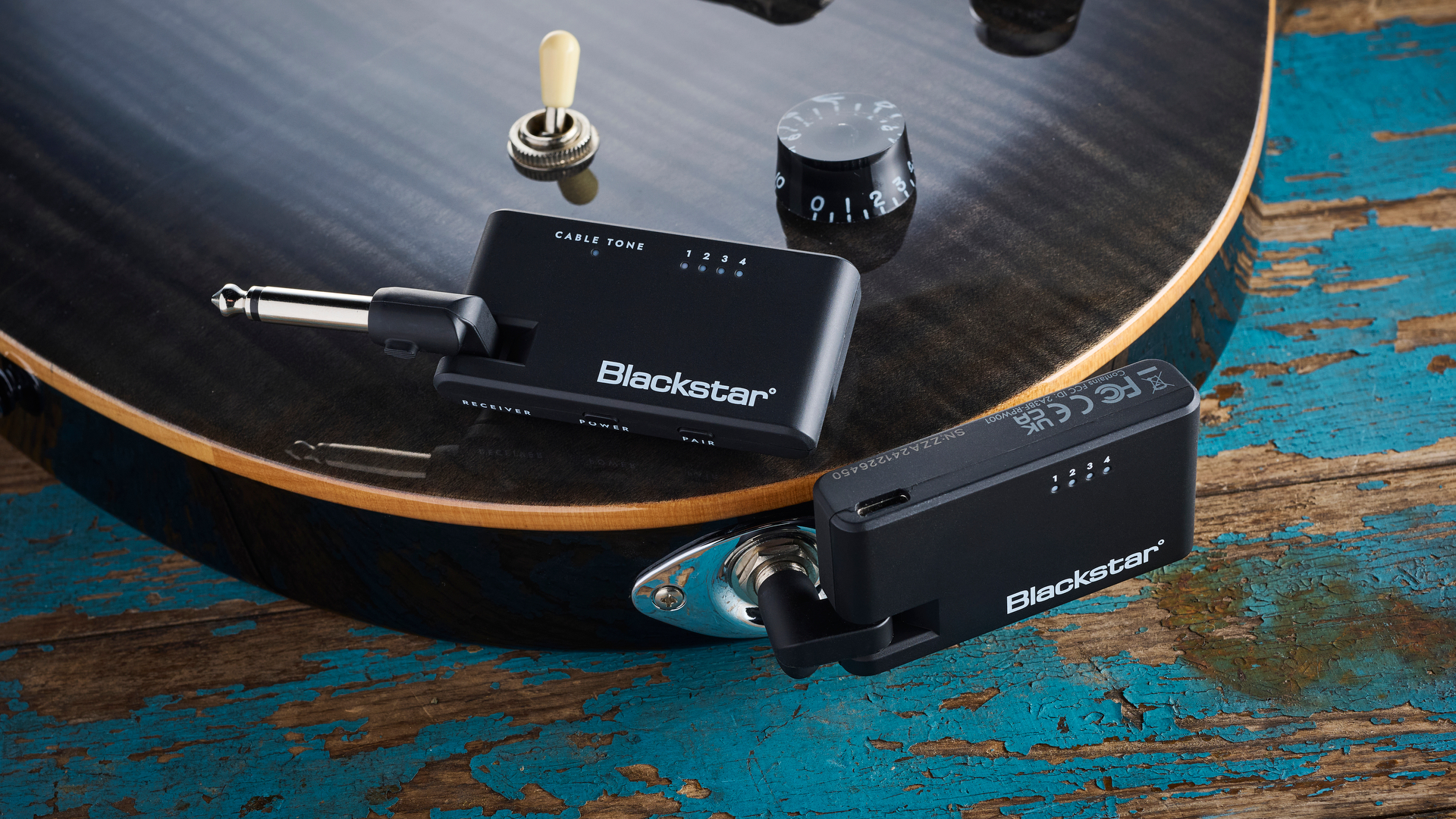
What is it?
It’s official: guitar wireless systems have gone mainstream. With major players like Fender and Positive Grid joining Boss and Line 6 in the cable-free arena, there has never been more choice on the market. And with the Airwire i58, UK amp firm Blackstar has entered the fray.
With a look not dissimilar to a credit card with a jack on top, the Airwire i58 means business. Like Fender’s Telepath, it operates on the 5.8GHz frequency, which dodges Wi-Fi interference, but it’s also packing what Blackstar calls a “smart anti-interference algorithm”.
This means that when interference is detected, the Airwire will switch frequency band to prevent dropouts. It’s relatively rare to encounter interference with the 5.8GHz frequency, but it’s reassuring to hear that Blackstar has pulled out all the stops nonetheless.
The Airwire has four selectable channels (accessed via the Pair button), which means you can easily mix and match transmitters and receivers, and avoid interference from other Airwire units.
For that reason, Blackstar is touting the device as ideal for bands, allowing your fellow guitarists and bassists to cut the cord without interfering with your own signal.
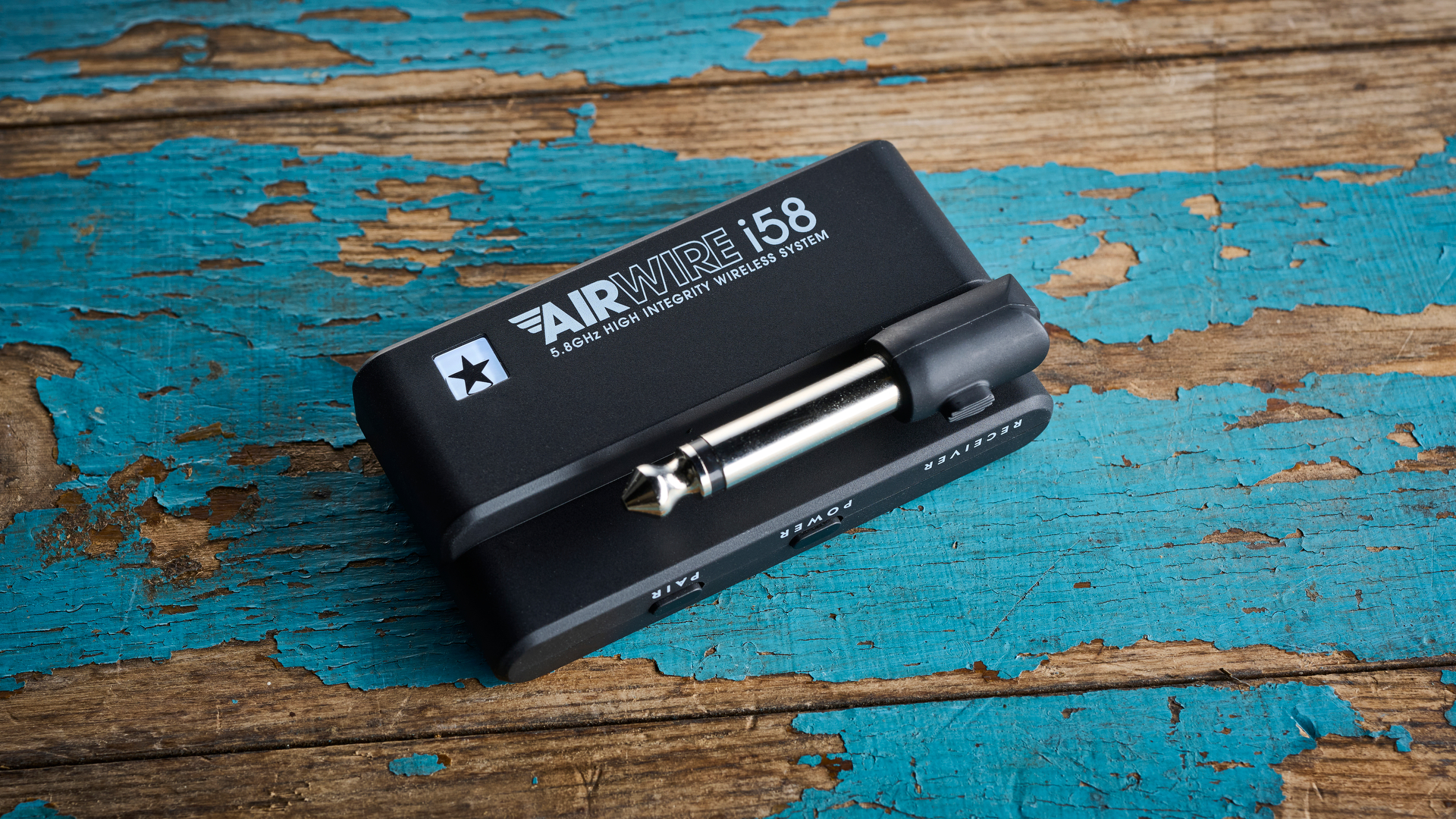
Unusually, there’s no active/passive switch to tailor the Airwire’s output to active pickup-equipped designs, but there is a Cable Tone button, which promises a natural top-end roll-off closer to what a cable would provide, versus the zero-treble loss of the regular wireless signal. Holding the Power button for three seconds turns each unit on or off.
All the other key stats compete favorably with the competition: there’s transmission up to 100 feet, and a tiny <6ms latency.
The 20Hz-20kHz frequency response covers the entire guitar frequency range, while the stated nine-hour battery life from 2.5 hours of USB-C charging beats out the Fender Telepath by one hour. The receiver unit will turn off automatically after 10 minutes if no signal is detected in order to preserve battery life.
Usability and performance
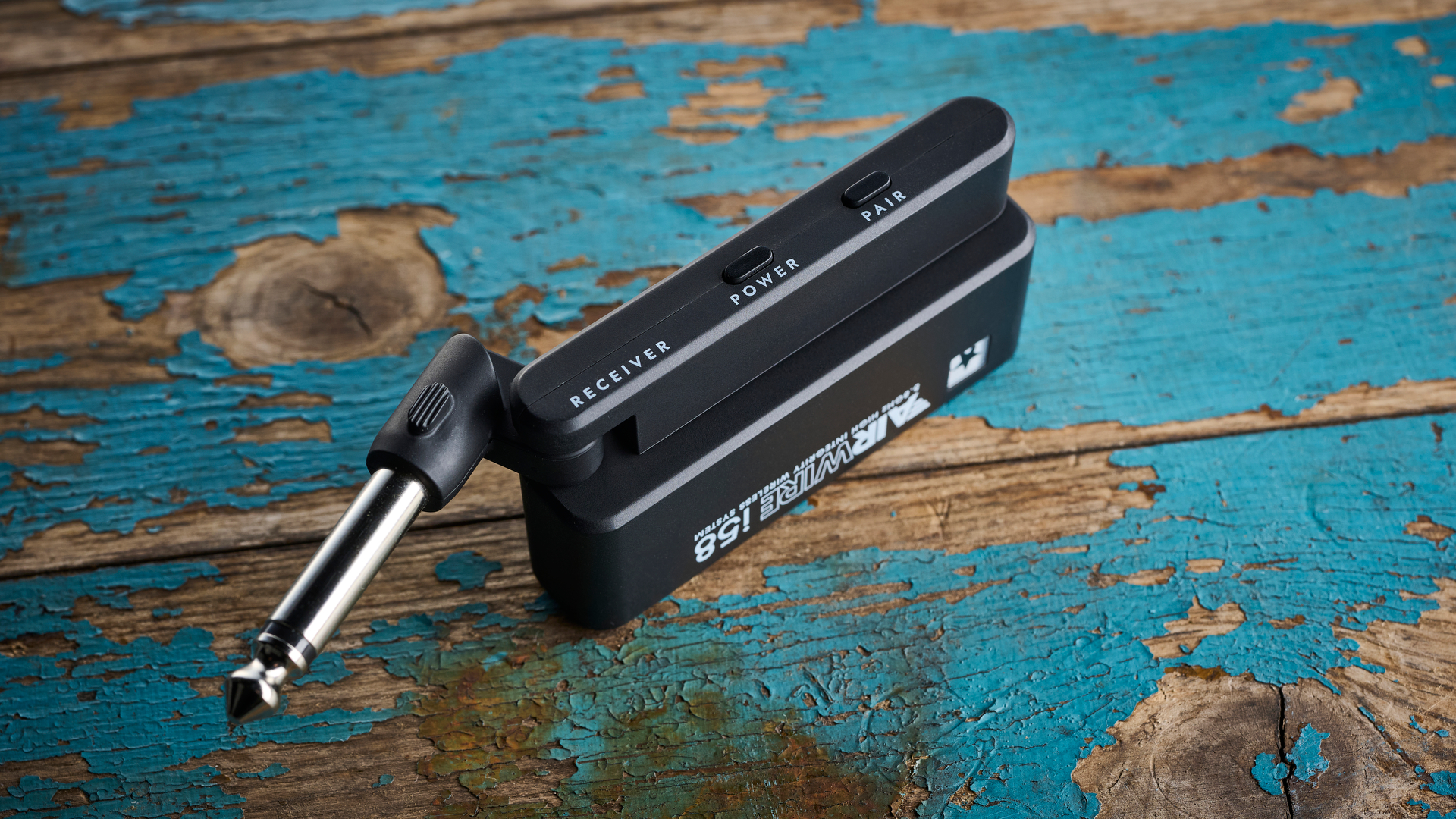
With their diminutive chassis, recessed fold-up jacks and stealth-black finish, the Airwire units themselves are among the most discreet on the market. They’re noticeably more compact than Fender’s Telepath and fit easily into most pedalboard setups, although they don’t offer any rubber grips on their underbelly to prevent them sliding around when you lay them down on a table.
They do, however, come with a nice felt bag to prevent damage when you inevitably chuck them in the front pocket of your gigbag.
The jack hinge is sturdy yet flexible and fits into front-loaded Strat jack sockets no problem, and the light-up Blackstar logo is a nice touch.
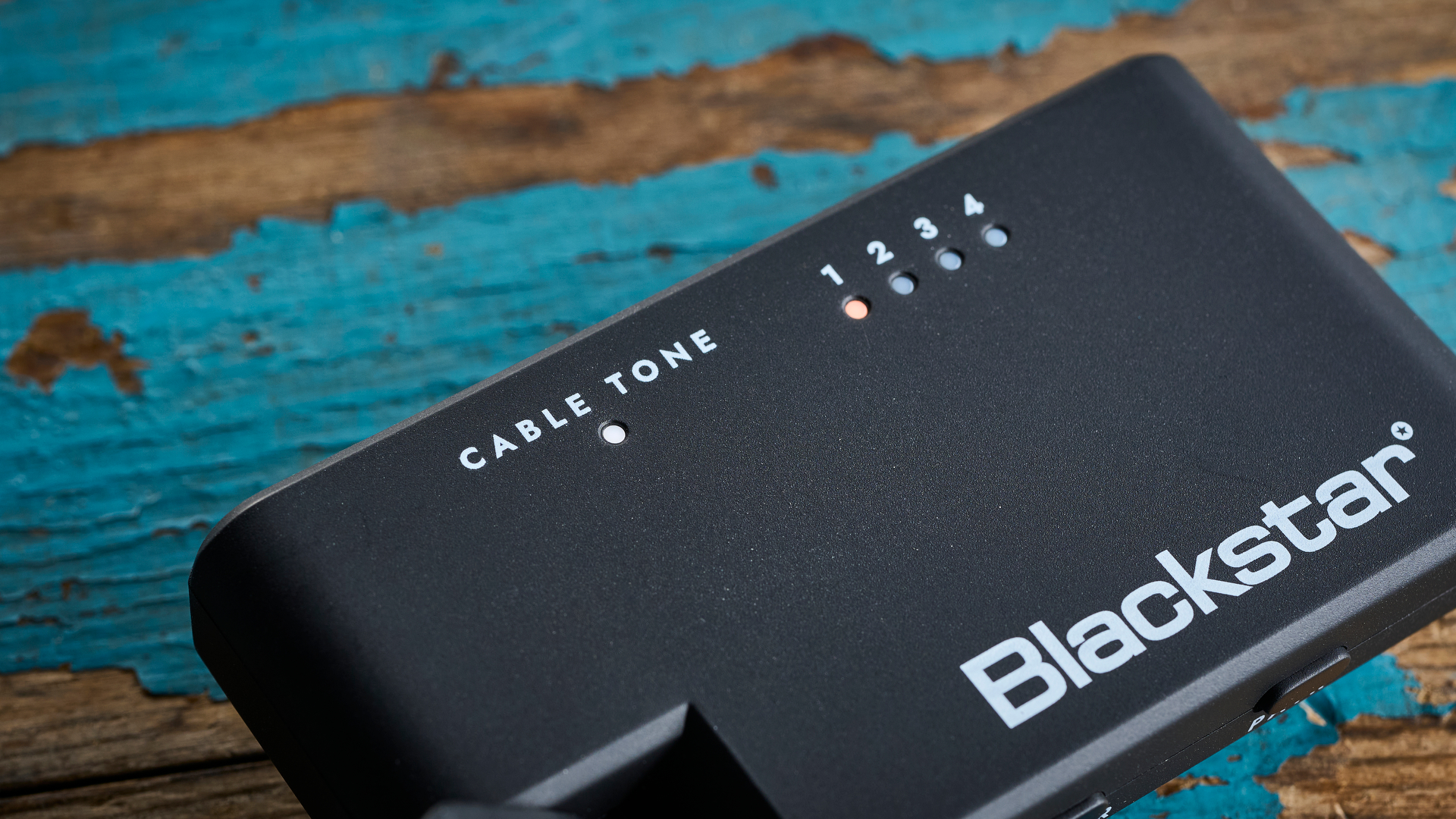
The only time I started to experience any lag was when I continued to play guitar while I ventured down two flights of stairs
My testing took place at home, in a rehearsal studio and a club-sized venue, and the Airwire passed the most important wireless system tests with flying colors: near-instantaneous pairing, zero dropouts, superb audio quality and low latency. The only time I started to experience any lag was when I continued to play guitar while I ventured down two flights of stairs, and by that stage you can barely hear what’s coming out of the amp anyway.
Although I didn’t have multiple Airwire systems to hand, the channel switching is seamless and bodes well if multiple members of your band are going wireless. I didn’t experience any interference from Wi-Fi or Bluetooth signals during my testing.
One of the Airwire’s USPs is the Cable Tone button, which in practice, engages a very slight softening of the highs – perhaps not quite as much as a 20-foot cable, but it’ll certainly get you in the ballpark of the treble loss you’d experience, rather than the brightness associated with wireless systems. Subtle but effective.
The Cable Tone switch is located on the receiver unit rather than the transmitter, so it’s not something you’ll be changing on a regular basis.
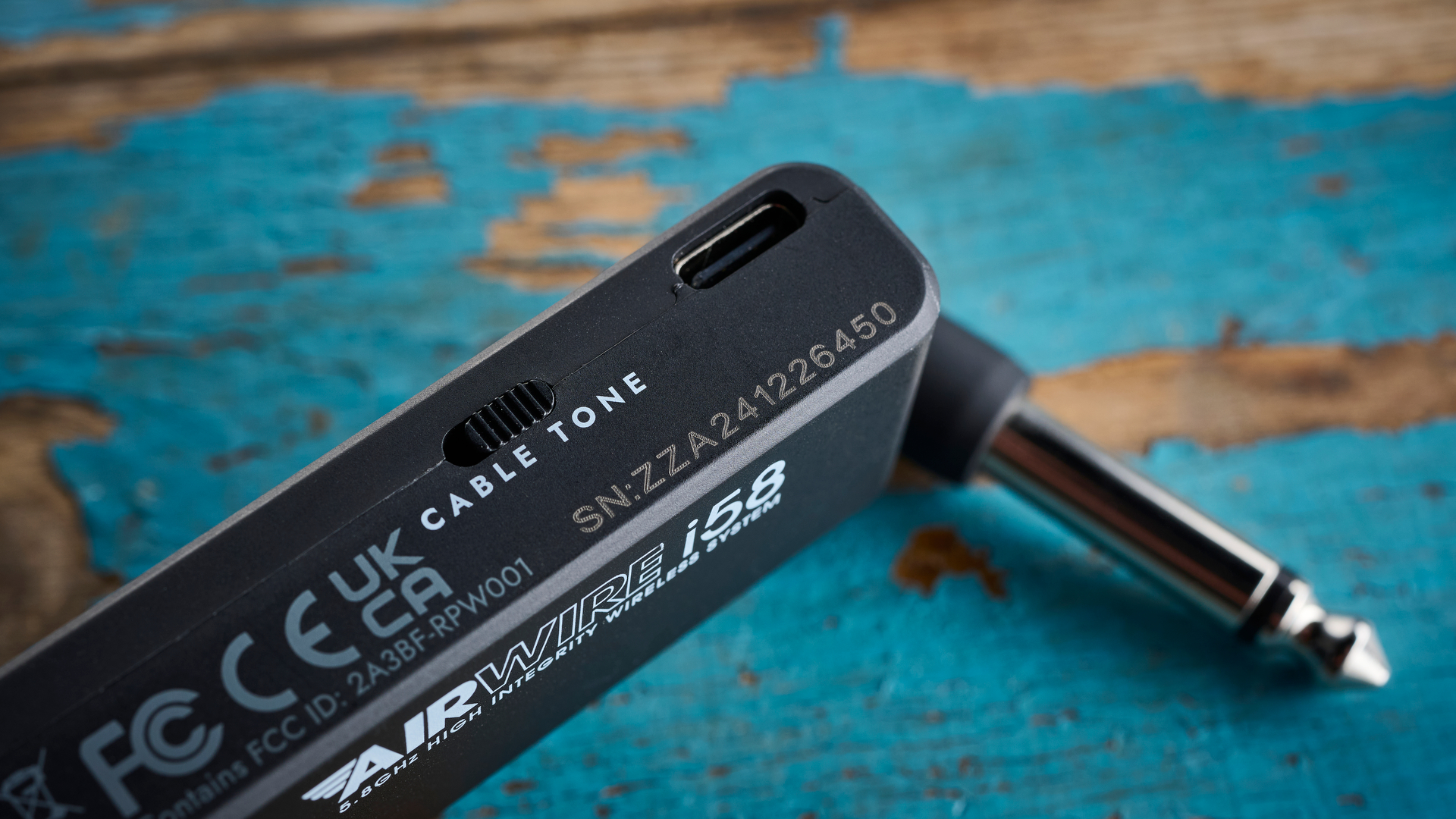
On that note, the transmitter and receiver are indistinguishable apart from the Cable Tone button and its associated LED, which I did find hard to tell apart in a gig scenario on a dark stage. The onboard buttons are also rather small and feel identical to the touch, meaning I did find myself initially mixing up Power and Pair when the unit was plugged into my Jazzmaster.
The battery life itself is remarkable – I was astonished to find it was still showing 75%+ remaining after a few at-home practice sessions and a two-hour band rehearsal
Another slight annoyance is that the charging lights are on the bottom of the unit (assuming the jack socket is the top), so you’ll have to flip the transmitter and receiver over to see whether they’re finished juicing up.
But the battery life itself is remarkable – I was astonished to find it was still showing 75%+ remaining after a few at-home practice sessions and a two-hour band rehearsal. When you’re under 75%, you’ll get a yellow rather than white LED; under 30% gives you red, and less than 10% is the danger zone, giving you a blinking red light.
The lack of an active/passive switch to accommodate higher-output pickup guitars might be a deal-breaker for players used to having such a feature. Personally, I tend to keep wireless systems set to passive regardless of whether I’m running passive or active pickups, but is a surprising omission nonetheless.
Verdict

Guitar World Verdict: Compact wireless systems have gotten so good that it’s getting increasingly difficult to choose between them. Blackstar’s Airwire wins out on battery life, stealthy aesthetics and its well-judged Cable Tone feature, while its performance is comfortably on a par with similar offerings from Fender and Xvive.
The lack of an active/passive switch may deter players seeking a lower output, but for anyone else, this is an exceptional wireless system.
Specs
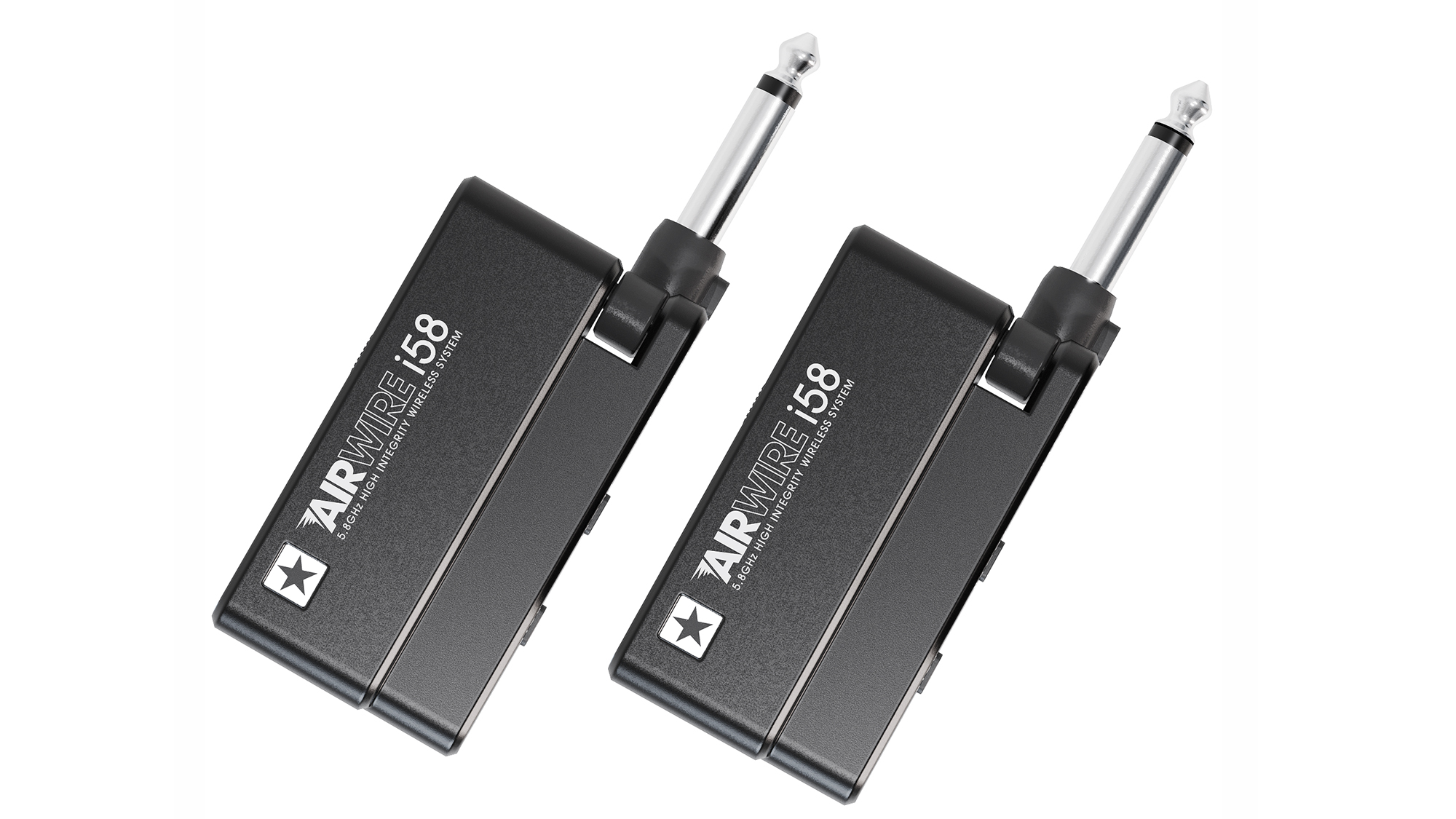
- Launch price: $169/£149
- Type: Guitar wireless system
- Controls: Power, Pair, Cable Tone (receiver only)
- Connectivity: 1/4" mono jack, USB-C 5V port
- Range: 100 feet
- Battery life: 9 hours from a 2.5-hour charge
- Contact: Blackstar Amps







